Winter is Coming: How to Properly Prepare Equipment for Winter

With the winter months quickly approaching, contractors and business owners have to start thinking about preparing their equipment for harsh winter weather conditions.
Whether working in the freezing temperatures or storing equipment for the season, companies need to ensure proper winter maintenance to avoid costly problems come spring.
Engine Maintenance
When it comes to a machine’s engine, it’s important for operators to pay close attention to fuel, lubrication and air filtration. Failure to do so could result in costly repairs or machine downtime.
Fuel system maintenance includes cleaning the fuel tank cap/vent and making sure the cap is functioning properly; checking for water or sediment in the fuel, which is the number one cause of fuel injection system failures; and inspecting the fuel filter.
Also, verify the quality of fuel you are using/receiving from your provider. Cold weather operation tends to accentuate any fuel quality issues, such as moisture in the fuel or contaminants.
Engine oils protect the engine’s vital engine components. Make sure to always follow the equipment manufacturer’s lubricant and change interval recommendations.
Inspect the air filtration system for any openings that could draw in unfiltered air and always use the correct replacement filter. Contaminated air is a common cause of premature engine failure.
If the machine uses diesel exhaust fluid, or DEF, it’s important for operators to know that it can freeze and thaw without hurting its ability to function properly. DEF has a shelf life of one year (varies based on storage conditions). If owners aren’t going to use their equipment during the winter, it’s a good idea to store indoors in temperature-controlled environments that are out of direct sunlight. Also, make sure to store DEF in an HTPE plastic or stainless steel container, as it is mildly corrosive. DEF can be filled up prior to storage, however, make sure to leave room for expansion. DEF can expand in the winter up to 7 percent and potentially crack the reservoir.
Protecting Cooling Systems
Cooling systems should be inspected regularly, including the coolant reservoir and hoses. Contractors should verify that coolant in the radiator is always filled to the cap, and also inspect the cap for proper relief pressure.
Coolant does more than just keep the cooling system from freezing. It prevents corrosion, lubricates shaft seals, increases the boiling point temperature and inhibits cavitation, which is a damaging condition that erodes components. Because of this, coolants should be flushed and replaced at OEM-specified intervals.
Contractors should also check the coolant concentration, which should be maintained at 50 percent. Pay attention to whether the system uses conventional or OAT coolants and never mix the two.
Maximizing Your Batteries
Preventative winter maintenance of the battery actually starts in the fall. There are a number of steps operators should take to start preparing their equipment for the cold winter months.
For starters, check that the battery electrolyte is up to the full indicator ring and over the top of the plates. Plates that have dried will never perform satisfactorily again. It’s also good practice to check the rated current output of the alternator and load test current output of the battery.
Operators should clean any dirt and debris from the top of the battery; it can create a conductive path and slowly drain energy. If there’s any corrosion around the posts, clean them using a little baking soda and a terminal brush. The main point here is that you want to ensure the terminal posts and cables have clean and secure contact, ensuring the best and most consistent current supply from the batteries to the machine.
If the machine isn’t going to be used for the winter and will be stored outdoors, it’s best to remove the batteries and store them indoors to prevent freezing. Anytime a battery will be sitting for an extended period, it is best to connect it to a battery maintainer to keep them at a full state of charge. This will keep them ready when the time comes to use the machine.
Contrary to belief, cold temperatures don’t significantly impact the service life of a battery. However, it does induce a “stress test”, amplifying the effects of time, heat, vibration and performance of the charging system. If the machine will be operated throughout the season, it’s important to make sure batteries are properly charged.
An under-charged battery can perform well at 80°F, but its true condition becomes evident at 0°F when starting current demands can increase by 200 percent and a battery, even in great condition, is reduced to 40 percent of its summer cranking current.
Frequent starts and stops are also detrimental because the battery is never given the chance to fully recharge.
Utilizing the Undercarriage
The undercarriage of a machine represents roughly 40 to 60 percent of its maintenance costs over the machine’s service life. So in order to maximize a machine’s efficiency in the winter, proper undercarriage maintenance is essential.
Operators should make daily inspections and keep it clean of any mud, snow or debris. Carefully look for loose or worn parts, and refer to the operator’s manual for correct track tensioning and adjustment.
Whether operating the machine during the winter or storing it, make sure to schedule an undercarriage inspection once a year.
Taking Care of Tires
Tires require daily care and maintenance during winter. Because of this, it’s important for equipment operators to take steps to reduce tire wear while operating equipment.
For starters, always keep tires properly inflated, and remove counterweights when not in use, as they put additional stress on the tires. Look for even wear, remove debris, and inspect tires for any cracking and chunking. If the center of the tire is worn smooth, or there’s any chunking, then it’s time to replace them.
A Successful Winter
In order to properly maintain equipment operating in cold temperatures and snowy conditions, operators should alter their operation habits to ensure equipment longevity. Behaviors like minimizing high operating speeds and on-road travel and alternating turning directions can be the difference between downtime and productivity.
Another important piece of maintenance is a pre-operation inspection and the proper warm-up of the equipment. Warming up the machine reduces shock to components caused by cold fluids or hydraulic systems. The potential for blown hoses or O-rings increases with colder weather. Providing sufficient warm-up time will provide an operator a more productive machine as well as increase safe operation and a more comfortable operating environment.
When it comes to operator behavior, excessive idling should be monitored closely, as it consumes needless fuel, warranty hours and contaminates diesel particulate filters. Condensation can build up in the crankcase, which promotes the build up of acids and sludge, leading to costly downtime and potential repairs.
Also, if something does happen and business owners require replacement parts or fluids, remanufactured parts are a great option. Remanufactured parts, like the ones offered from CASE, are built to meet or exceed original OEM specifications, and are backed by a best-in-class warranty that in some cases is better than new warranty coverage.
Protecting your equipment during the winter is a smart investment in not only the equipment itself, but also your future.
Source: http://www.casece.com/en_us/News/Pages/Winter-is-Coming-How-to-Properly-Prepare-Equipment-for-Winter.aspx












